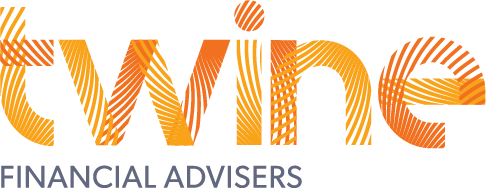At Twine Financial Advisers, we specialize in simplifying the often overwhelming process of purchasing your first home. We create a First-Home Roadmap that leads you through the entire journey, from assessing your financial readiness and understanding your borrowing capacity to formulating a savings plan and securing a mortgage. We provide valuable insights into current market conditions and trends, empowering you to make informed choices. Don’t let the complexities of buying your first home hold you back—let’s embark on this journey together.
Your Journey to Home Ownership
Starts Here.
What’s included?
- Clarifying your homeownership objectives.
- Guiding you step-by-step through the home-buying journey.
- Assessing your finances and determining your borrowing capacity.
- Creating a tailored plant ot help you reach your savings goal.
- Getting you the pre-approval from the bank.
- Connecting you to other professional advisers, if required.
How much does it cost?
Our services are free given you also settle the loan with us.
Choose where you are in your journey below:
The First Home Buyers’ Road Map
STEP ONE:
Getting your deposit together
When it comes to your deposit, having at least 10% is usually required. However, aiming for a 20% deposit is better as it helps you avoid additional costs like the Low Equity Margin (LEM) on top of your interest rate. Let’s explore different ways to help you build your deposit:
1. Your own savings / KiwiSaver withdrawal
Saving at least 5% of the deposit demonstrates to the banks your capacity to save responsibly and live within your means. This can include your personal savings as well as funds withdrawn from your KiwiSaver account.
2. Family help
Family contributions can significantly boost your deposit, getting you closer to the 20% mark. If you save 5% of the deposit yourself (including KiwiSaver), the banks won’t mind where the remaining 15% comes from, as long as it’s not another loan. Here are some options:
- Gifting
Parents provide a cash contribution without expecting repayment. To satisfy the bank, you’ll need to provide a gifting certificate.
- Deed of Debt
This involves a cash contribution with a caveat to repay upon the sale of the property. It is non-repayable and non-interest bearing. Seek legal advice before finalizing this agreement.
- Guaranteeing
Parents use part of their available equity and their property as security for your deposit.
- Renting from Parents
If the bank’s lending amount isn’t sufficient, you and your parents can collaborate. Your parents can purchase the property and rent it back to you. Once you’ve built up enough equity, you can buy the property from them at an agreed price.
3. Kainga Ora First Home Grant
Consider exploring the Kainga Ora First Home Grant, an initiative that provides financial support. The grant amount varies based on whether you’re purchasing an existing home or a newly built property. Apply in advance, as Housing New Zealand processes the grant and transfers it to your solicitor’s trust account on settlement day.
4. First home loan
With a First Home Loan, you only need a 5% deposit, making it an excellent option for first-time buyers. Keep in mind that this loan is available through select banks and underwritten by Kainga Ora.
STEP TWO:
How much can you borrow?
Two important factors come into play when it comes to borrowing for a home: how much the bank will lend on the property and how much you can afford to repay. Your Twine adviser will guide you through the process and ensure you make informed decisions that align with your financial goals.
1. How much will the bank lend on the property?
Lenders generally lend up to 80% of the property’s value, requiring a minimum 20% deposit. This is known as the Loan-to-Value (LVR) ratio.
For example:
If the purchase price of the house is $500,000, 20% deposit is $100,000.
Explore Low Deposit Options:
Low-deposit options can allow you to borrow up to 95% of the property’s value, so you’ll only need a 5% deposit. However, low-deposit loans come with additional costs, such as higher interest rates (Standard interest rate + Low Equity Margin) and the need for mortgage insurance. A registered valuation may also be required.
2. How much can you afford to repay?
Assessing Your Cash Surplus:
Lenders evaluate your ability to repay by assessing your Uncommitted Monthly Income (UMI) based on various factors:
- Income sources (salary, rental income, investments, etc.)
- Living expenses (insurance, rates, childcare, groceries, vehicle, etc.)
- Other debts (credit card limits, car loans, personal loans, student loans)
Each lender has their own method of calculating your UMI and specific requirements. It’s important to have enough monthly cash surplus to ensure you can continue meeting loan repayments in case of future uncertainties, such as income reduction or increased interest rates.
3. How Twine financial advisers can help
We have partnered with all major banks and lenders in New Zealand, giving you access to a variety of options. Our experienced mortgage advisers can easily calculate and recommend a lender that suits your unique needs. By working with us, you’re not limited to just one lender—we provide personalized solutions based on your financial situation.
STEP THREE:
Getting a pre-approval
Once you’ve accumulated your deposit, and all your ducks are in a row, it’s time to secure a pre-approval with the bank.
Your Twine adviser will prepare and submit your application to the lender. Since we understand your finances and your objectives, we’ll recommend a lender that suits your needs and offer banking products that help you save and pay down your mortgage faster.
Getting a pre-approval ensure precisely how much the bank will lend you before you start house hunting. This not only save time but it allows you to move quickly and make an offer on properties you want – giving you that competitive edge.
What’s included?
- Review and collate all your necessary documents
- Recommendations of suitable lender for you
- Underwriting and submission your application to the lender
- Negotiate with the lender the most favourable terms
STEP FOUR:
Optimise your mortgage structure
Once your offer has been accepted and you have fulfilled all your conditions, the final step is to optimise your mortgage structure.
By optimising your mortgage structure, it can help you save money on interest payments and pay off your loan faster. With various options available, determining the ideal combination of fixed and floating interest rates for your unique situation, and the duration of those rates, can be challenging.
If you plan to have kids, change careers, or travel overseas – it’s important to plan and work out how this will impact your finances. This is the time to let your Twine adviser know so they can help you plan for these changes and make sure your loans are structured correctly to allow for future flexibility.
What’s included?
- Advice and discussion with you to help you understand how to best structure your mortgage that suits your needs and goals.
- Negotiate with the lender the most favorable interest rates and cash incentives for you
First Home Buyer's FAQ
How much deposit do I need?
You should aim to put down 20% of the home’s purchase price as a deposit. But it is possible to buy a home with a deposit as low as 5%, though it usually comes with higher costs (e.g. Low Equity Margin) and greater risks for both you and the lender.
But it is possible to bring up your deposit level by:
- Budgeting and saving up for a larger deposit
- Family gifts and other family assistance
- You may be eligible for Kāinga Ora’s; First Home Grant or First Home Loan
- Pay off your short term debts
Can I use KiwiSaver for a house deposit?
Yes! As long as you’ve been a member of KiwiSaver for 3 years, you can withdraw some of your KiwiSaver to purchase your first home.
You can withdraw as much as you want, however, the minimum balance must be $1,000 in your KiwiSaver account.
You must also live in the house, so you can’t use your KiwiSaver to purchase an investment property.
You can withdraw: your contributions, employer’s contributions, the government contribution, interest you’ve earned and fee subsidies (if any).
How much should I offer?
You are the market, so place an offer that you think is fair. Use resources like homes.co.nz to research recent sales in the area and determine a fair and reasonable price. You need to find comparable properties, so look at the number of bedrooms, size of the property and proximity to amenities to determine its comparability.
Can I buy a house with a 5% deposit in NZ?
Yes, you may eligible for a government grant called a First Home Loan, which is underwritten by Kainga Ora.
Normally, low deposit loans are subject to Low Equity Margins (LEM) but with a First Home Loan you can access the same special interest rates available to borrowers with higher deposits. Which reduces your overall loan repayment, helping you pay off your loan faster.
The only upfront cost will be the 0.5% Lender’s Mortgage Insurance (LMI) which gets added on to your loan balance and you pay this off over the life of the loan.

